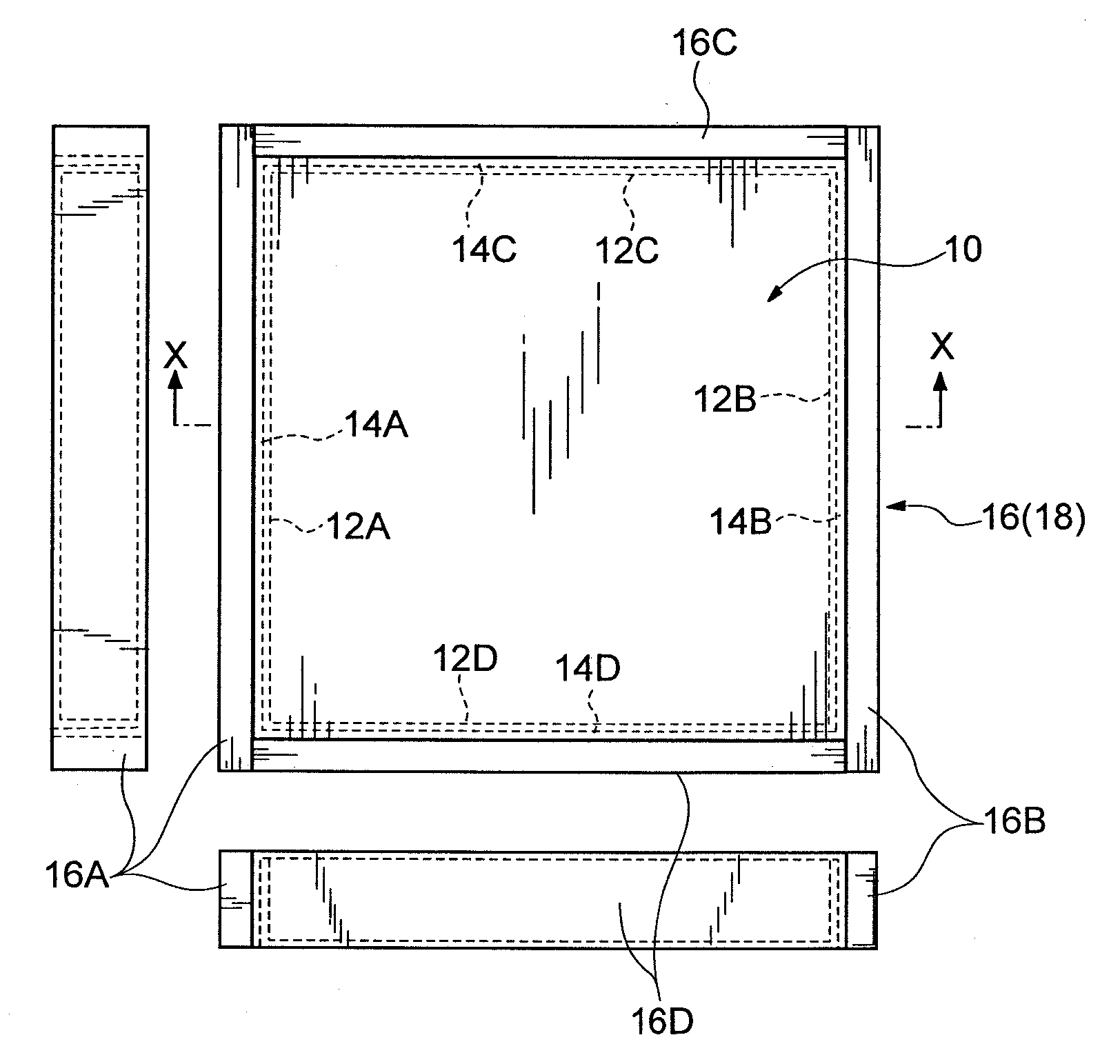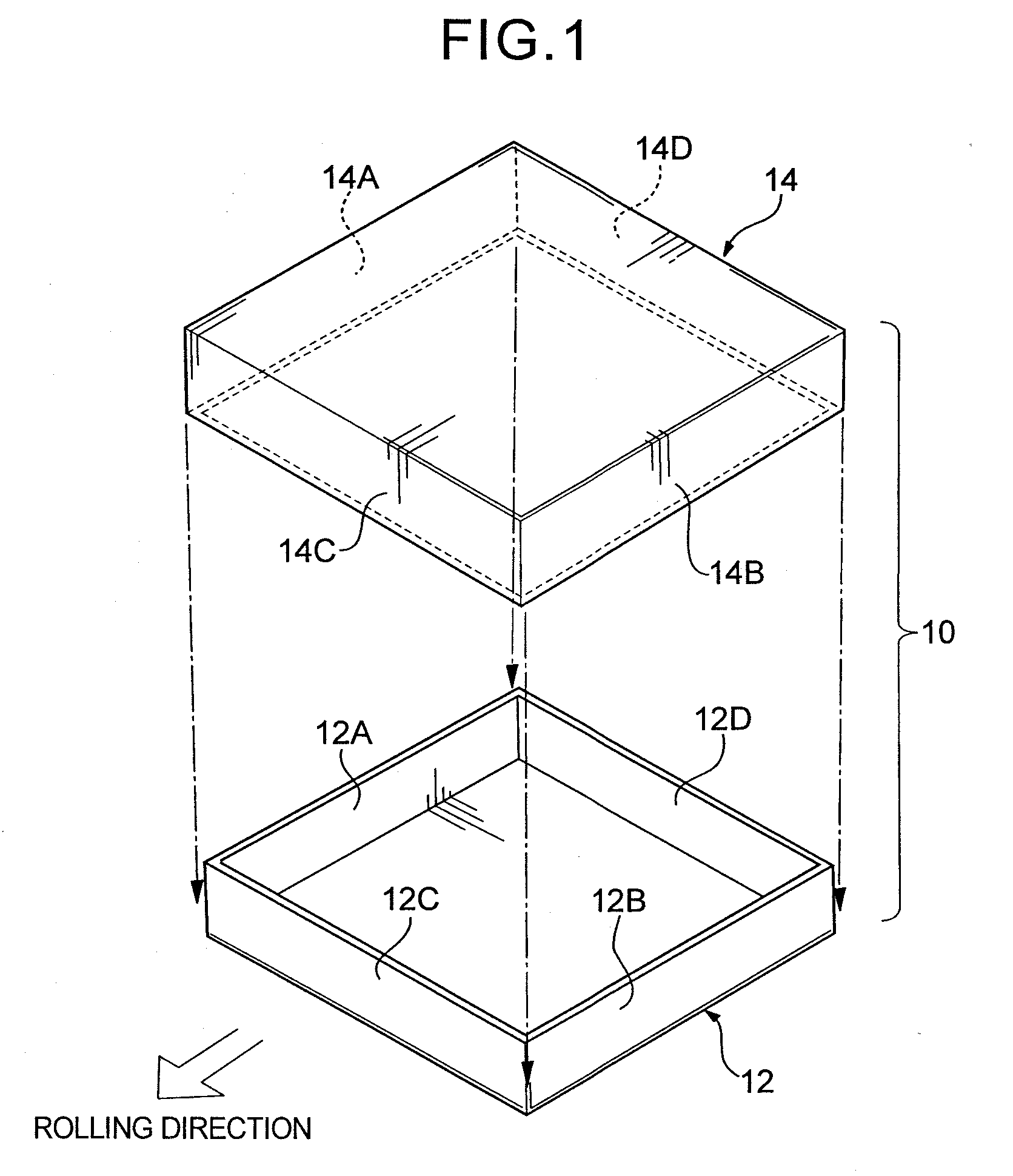Metal matrix composite material
a composite material and metal matrix technology, applied in the direction of cores/yokes, chemistry apparatus and processes, transportation and packaging, etc., can solve the problems of significant deterioration in sinterability and plastic workability, difficult or substantially impossible to roll cladded materials, and deterioration in process efficiency, so as to facilitate cold plastic work, and increase the filling rate
- Summary
- Abstract
- Description
- Claims
- Application Information
AI Technical Summary
Benefits of technology
Problems solved by technology
Method used
Image
Examples
first embodiment
[0045]The following description will be made about raw materials for a metal matrix composite material according to an embodiment of the present invention, a production method for the metal matrix composite material, and a specific example of the metal matrix composite material, in this order.
[0046](1) Raw Materials
[0047]Aluminum Powder Serving as the Matrix
[0048]In a metal matrix composite material according to a preferred embodiment of the present invention, an aluminum powder serving as a matrix is made of an Al based alloy, specifically an aluminum alloy defined as A 1100 by JIS (or AA 1100 by A.A.). More specifically, the aluminum powder comprises 0.25 weight % or less of silicon (Si), 0.40 weight % or less of iron (Fe), 0.05 weight % or less of copper (Cu), 0.05 weight % or less of manganese (Mn), 0.05 weight % or less of magnesium (Mg), 0.05 weight % or less of chromium (Cr), 0.05 weight % or less of zinc (Zn), 0.05 weight % or less of vanadium (V) and 0.03 weight % or less o...
example 1
[0118]A B4C ceramic powder was uniformly mixed with an aluminum alloy powder having a composition as shown in Table 1, in an amount of 30 mass %, to prepare a powder mixture M. The aluminum alloy powder had an average particle size (D50) of 10 μm, and the B4C ceramic powder has an average particle size (D50) of 33 μm.
[0119]Then, a lower casing 12 made of an aluminum alloy (JIS A5052P) and formed in an approximately rectangular parallelepiped shape having outside dimensions of 367.7 mm on a side in square-shaped top and bottom surfaces, and 54.8 mm in height, and a wall thickness of 3.0 mm was prepared. Further, an upper casing 14 made of an aluminum alloy (JIS A5052P) and formed in an approximately rectangular parallelepiped shape having outside dimensions of 370.9 mm on a side in square-shaped top and bottom surfaces, and 57.8 mm in height, and a wall thickness of 3.0 mm was prepared. The aluminum alloy (JIS A5052P) had a tensile strength of 195 MPa. A composition of the aluminum a...
PUM
| Property | Measurement | Unit |
|---|---|---|
| particle size | aaaaa | aaaaa |
| particle size | aaaaa | aaaaa |
| particle size | aaaaa | aaaaa |
Abstract
Description
Claims
Application Information
 Login to View More
Login to View More - R&D
- Intellectual Property
- Life Sciences
- Materials
- Tech Scout
- Unparalleled Data Quality
- Higher Quality Content
- 60% Fewer Hallucinations
Browse by: Latest US Patents, China's latest patents, Technical Efficacy Thesaurus, Application Domain, Technology Topic, Popular Technical Reports.
© 2025 PatSnap. All rights reserved.Legal|Privacy policy|Modern Slavery Act Transparency Statement|Sitemap|About US| Contact US: help@patsnap.com



